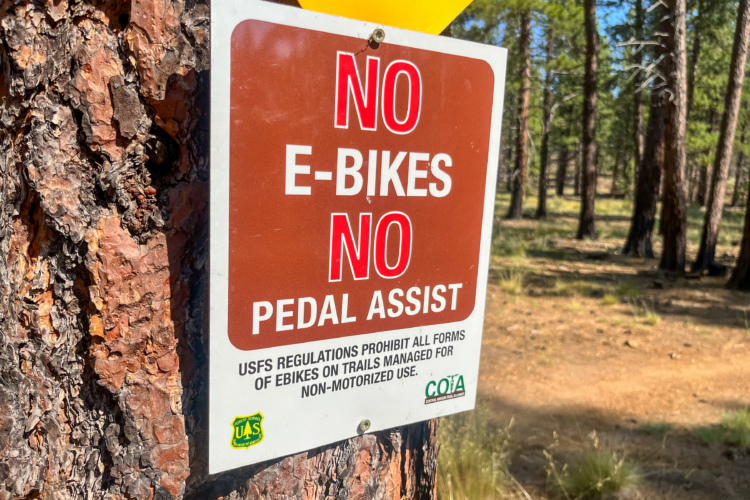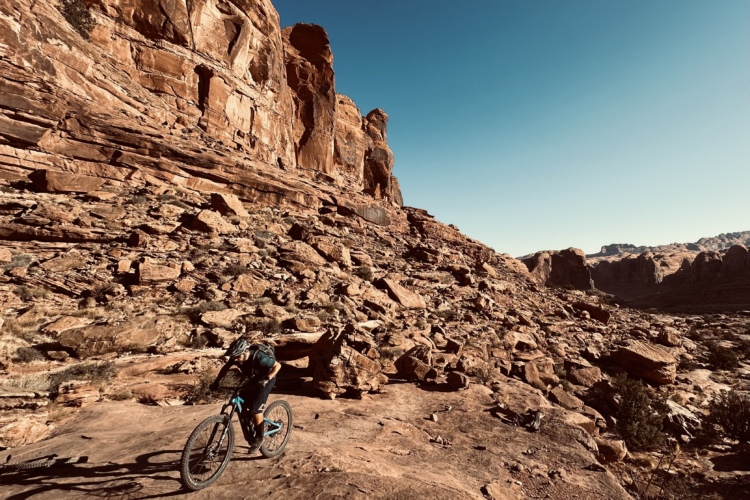
2024 has been a monumental year for e-bikes gaining access to nonmotorized singletrack across the nation. In almost every instance of e-bikes gaining trail access, this permission only extends to Class 1 pedal-assist e-bikes.
However, according to a press release from the Ouachita and Ozark-St. Francis National Forests, two iconic Arkansas IMBA epic routes will soon be open to “all classes of electric bikes,” which includes some e-bikes with a throttle.
What are the differences between the three classes of e-bikes?
Before we go further, let’s first clarify the differences between the three e-bike classes.
The “3-Class” e-bike system was developed in large part by PeopleForBikes and has been adopted by most states in the USA. Most e-bike manufacturers recognize this three-class system, including e-bike motor manufacturer Bosch, which has published the most succinct summary of the system.
Class 1
Class 1 e-bikes are “pedal-assist only, with no throttle, and have a maximum assisted speed of 20 mph,” according to Bosch. Most high-end eMTBs sold today are Class 1, as most places that allow electric mountain bikes only authorize access for Class 1 e-bikes. Class 1 eMTBS ride almost identically to a regular mountain bike, where the rider must pedal to achieve forward progress.
Class 2
Class 2 e-bikes are also capped at the same 20mph speed limit as Class 1, but they are throttle-assisted, making it possible for riders to accelerate without pedaling at all. On most Class 2 e-bikes, when the rider pedals, no extra effort is added unless the throttle is pressed.
“Class 2 may not be suitable for singletrack mountain bike trails — it has been shown that they pose greater physical damage to trails due to the throttle-actuation,” writes Bosch. “Class 2 may be better suited for multi-use OHV trails designed for more rugged off-road vehicles.” Note that Bosch only produces Class 1 and Class 3 e-bike motors.
Class 3
Class 3 e-bikes are pedal-assist only, meaning that they do not have a throttle. However, they have a higher built-in speed limit of 28mph instead of 20mph.
“Class 3 e-bikes are typically allowed on roads and on-road bike lanes (‘curb to curb’ infrastructure), but restricted from bike trails and multi-use paths,” writes Bosch. “While a 20-mph maximum speed is achievable on a traditional bicycle, decision makers and agencies consider the greater top-assisted speed of a Class 3 e-bike too fast for most bike paths and trails that are often shared with other trail users.”
All e-bike classes are limited to 750W
Finally, note that “all classes limit the motor’s power to one horsepower (750W),” according to Bosch. If a two-wheeled machine can deliver more than 750W, it is no longer classified as a “bicycle” and becomes a “motorcycle,” “moped,” or some other motorized designation.
For example, even though Sur-Run calls their “Light Bee” an “electric bike,” the stock Light Bee delivers 6,000W-7,000W (depending on which sources you check), with modified Sur-Runs capable of delivering up to 30,000W. Electric motorcycles of this type are not considered to be a class of e-bike.

Are the Ouachita and Ozark-St. Francis National Forests really allowing e-bikes with throttles on “non-motorized” trails?
Unlike most land management agencies in the USA, which are choosing to open non-motorized trails solely to Class 1 e-bikes, the Ouachita and Ozark-St. Francis National Forests have chosen to open two iconic mountain bike trail networks to all three classes of e-bikes.
In the signed decision memo dated September 16, 2024, the USFS author writes:
…the analysis showed no increase in the potential for adverse effects is expected from the different e-bike classes. However, an increase in beneficial effects may be realized for public access by allowing all classes of e-bike. Therefore, I have decided not to set a limit on e-bike classification.
That said, it is my expectation that e-bike users will, like with any other recreational activity, utilize the trails carefully and respectfully. Regulations prohibit careless and reckless operation of motor vehicles on the National Forest, and this includes e-bikes.
It is worth noting the contradiction here of classifying all three classes of e-bikes as bicycles, allowing them on non-motorized singletrack trails, and then, in the same breath, saying they’re still governed by the same regulations as other motor vehicles.
The author goes on to say:
The interdisciplinary team found overall beneficial effects of the project with a few minor localized negative effects and did not identify any significant adverse effects. I have evaluated the effects of the proposed action and determined that the impacts are not significant and would be within the standards set forth by the forests’ LRMPs and consistent with applicable environmental laws. Therefore, an environmental impact statement will not be prepared.

Which trails are affected?
This decision will open two iconic IMBA Epic mountain bike trails to Class 1, 2, and 3 e-bike use: the Womble Trail and the Syllamo Trail System.
The Womble Trail is a classic point-to-point route that runs for roughly 38 miles one-way. It is a rough, rugged backcountry route that sometimes doesn’t see enough maintenance, but is still an epic backcountry bucket list ride for mountain bikers from around the nation. If you’re attempting the entire route on an e-bike, consider bringing a spare battery.
The Syllamo Trails are also a long-time classic trail system, but according to recent reports, the trails aren’t as well maintained as they once were. That said, this network is home to an impressive 51 miles of singletrack. These trails have also fallen out of the zeitgeist due to the construction of hundreds (or thousands?) of miles of modern mountain bike trails across Arkansas. Finally, note that e-bikes will not be allowed on “a portion of the Jack’s Branch Loop of the Syllamo Trail System that falls within the designated Wild and Scenic River corridor of North Sylamore Creek,” according to the USFS.
This decision from the USFS is scheduled to take effect in January 2025.





















5 Comments
Nov 20, 2024
Mixing with analog bikes. It is already enough of a dance for Class 1s and analog.
Nov 19, 2024
Nov 20, 2024
Nov 22, 2024
Nov 19, 2024